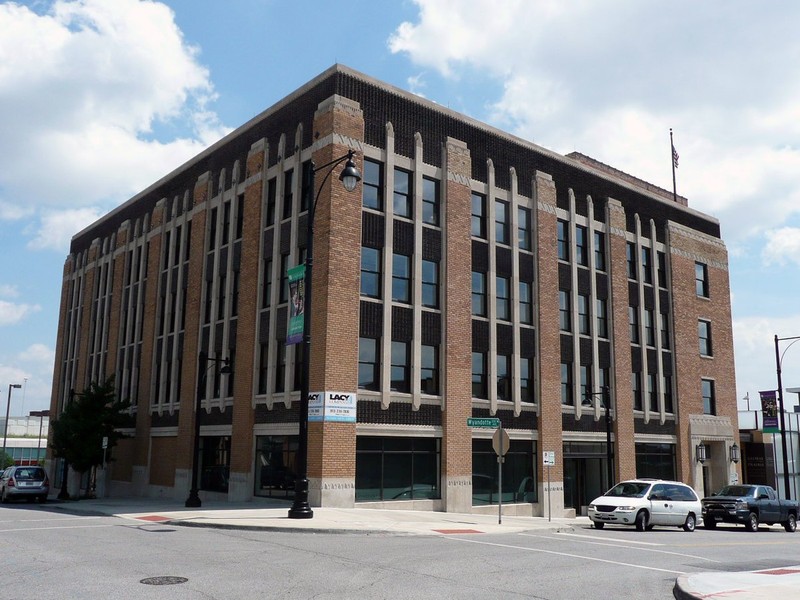Vitagraph Film Exchange Building
Introduction
Text-to-speech Audio
This building was completed in 1930 in an area of Kansas City known as Film Row due to the area's association with the movie industry. It is a good example of Art Deco architecture, which was popular in the 1920s and 1930s when Vitagraph was commissioned and built. While the building has been altered on the inside in order to be converted to office space, the outside still looks very similar to how it looked when the building was first built after Vitagraph was purchased by Warner Brothers.
Images

Backstory and Context
Text-to-speech Audio
The Vitagraph building opened in 1930 during a time when the film industry was undergoing significant transitions. Films were shifting from silent movies to those with synchronized sound and dialogue. As a result, the technology used to distribute films to theaters was changing to handle higher quality audio. American Vitagraph Company was able to handle these changes to technology, allowing it to survive as a company past the silent film era. This building was commissioned by Warner Brothers Film Corporation after they purchased Vitagraph Company.
The inside originally included sound booths using Vitagraph's new recording technology. Additionally, like other film company buildings at the time, it was full of fire safety measures such as sprinklers, remote-controlled emergency exits, and fireproof steel storage vaults. This was because until the early 1950s, film reels used cellulose nitrate, an extremely flammable and explosive kind of plastic. The consequences of inadequate fireproofing had already been seen in Kansas City when the Famous Players-Lasky building went up in flames in 1920.
After a $24 million renovation of the building financed by philanthropist Shirley Helzberg, the Kansas City Symphony moved to this building in 2010. The inside of the building has been heavily modified, including the removal of the steel vaults, in order to convert it into office space, but signs of it having been home to a warehouse and film distribution company can still be seen.
Kansas City's Vitagraph building and many of the others on Film Row were built in Art Deco style in an attempt to look more modern as more modern technology became common. Buildings in this style tended to have a simple basic structure, as opposed to more extravagant ones built in classical revival styles earlier in the twentieth century. However, they would still feature detailing in the form of patterned lines, which can still be seen on the outside of Vitagraph, or zigzags, which can be seen between the windows on the front of the building.
Sources
Esquevin, Christian. Films Lost in Fires, Silver Screen Modes by Christian Esquevin. December 20th, 2020. Accessed August 29th, 2022. http://silverscreenmodes.com/films-lost-in-fires/.
Millstein, Cydney E.. Vitagraph Film Exchange Building - National Register of Historic Places Registration Form, Missouri State Parks. July 29th, 2007. Accessed August 29th, 2022. https://mostateparks.com/sites/mostateparks/files/Vitagraph%20Film%20Exchange%20Bldg.pdf.
Amidon, Audrey. Film Preservation 101: Is Nitrate Film Really Dangerous?, National Archives Blog - The Unwritten Record. December 10th, 2018. Accessed August 29th, 2022. https://unwritten-record.blogs.archives.gov/2018/12/10/film-preservation-101-is-nitrate-film-really-dangerous/.
Thomann, Lauren. What is Art Deco Architecture?, The Spruce. March 4th, 2022. Accessed August 29th, 2022. https://www.thespruce.com/art-deco-architecture-4797589.
https://commons.wikimedia.org/wiki/File:Vitagraph_Film_Exchange_Building.jpg
